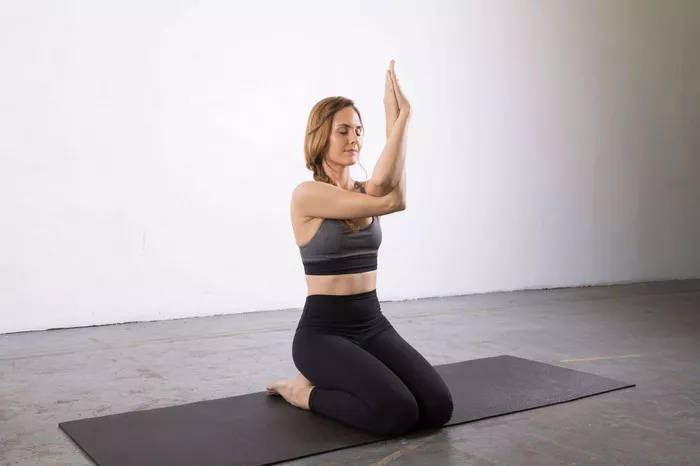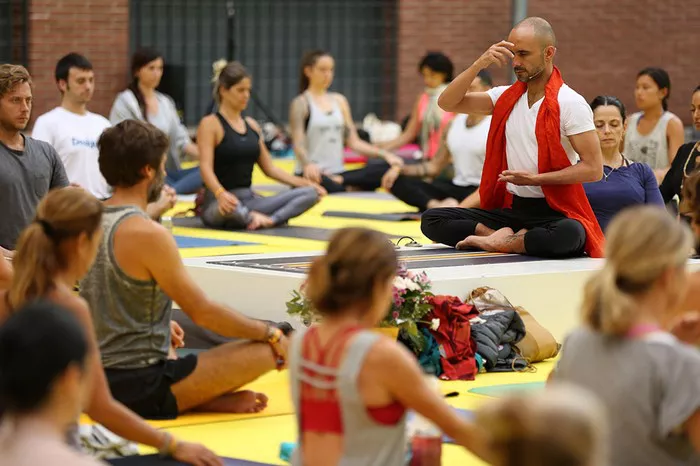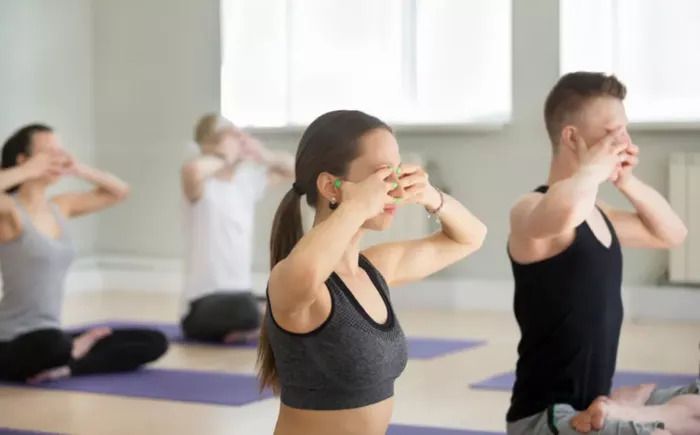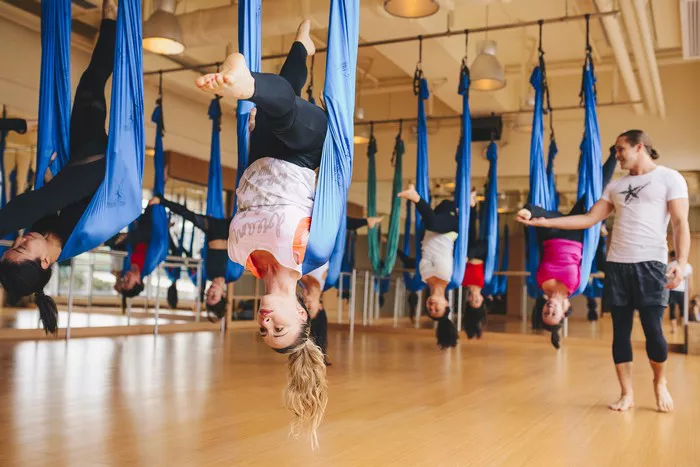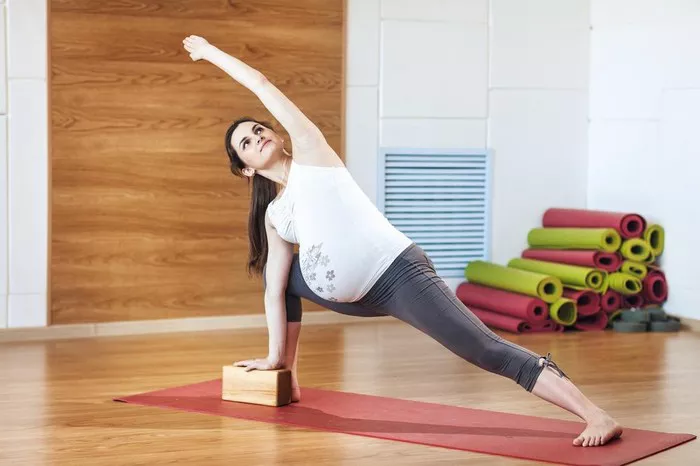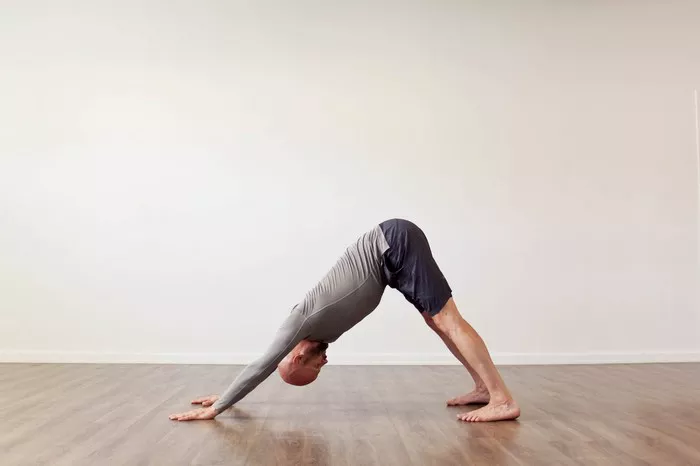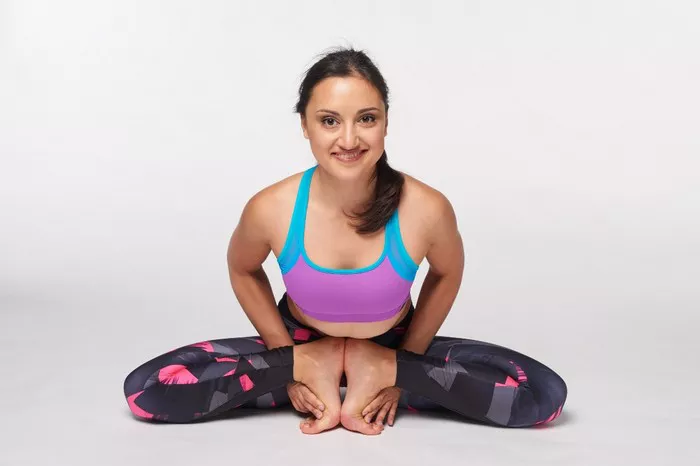In today’s fast-paced world, where time is precious and busy schedules often limit the time available for physical fitness, yoga has become a popular choice for many seeking to lose weight. Yoga combines breath control, meditation, and body movements to promote mental and physical well-being. The gentle nature of yoga makes it an excellent option for weight loss, as it not only helps burn calories but also contributes to muscle toning, improved flexibility, and stress reduction.
This guide will provide a comprehensive approach to doing weight loss yoga at home. By following these instructions, you can embark on a journey to improve your health and shed those extra pounds while practicing yoga in the comfort of your own space.
The Benefits of Weight Loss Yoga
Before diving into the specifics of the practice, it’s important to understand why yoga is an effective way to lose weight. Weight loss through yoga isn’t about extreme calorie-burning workouts or rapid results. Instead, it promotes gradual, sustainable progress by building strength, flexibility, and mindfulness. Here are the key benefits of weight loss yoga:
Boosts Metabolism: Certain styles of yoga, such as Vinyasa or Power Yoga, are more intense and help increase your heart rate, leading to greater calorie expenditure. As a result, yoga can help to speed up your metabolism.
Enhances Flexibility and Strength: Yoga promotes strength and flexibility, which can improve your overall body composition. Toned muscles burn more calories at rest, contributing to weight loss.
Stress Reduction: Stress is a major contributor to weight gain, especially around the abdominal area. Yoga incorporates mindfulness and meditation techniques that can help reduce stress and emotional eating.
Improves Digestive Health: Regular practice of yoga can promote healthy digestion, improve circulation, and enhance nutrient absorption, all of which can contribute to weight loss.
Mindful Eating: Yoga helps to cultivate mindfulness, which can extend to eating habits. Being more mindful of the food you consume can help prevent overeating, thus contributing to weight loss.
Preparing Your Space for Yoga
Creating a conducive environment for yoga practice at home is key to fostering consistency and focus. Here are some tips for setting up your yoga space:
Choose a Quiet and Spacious Area: Find a place in your home that is free of distractions. It should be large enough for you to move comfortably and stretch fully without bumping into furniture.
Clear the Space: Clear the area of clutter to create a calm and peaceful atmosphere. A clutter-free space will help you focus and be more present during your practice.
Use a Yoga Mat: A yoga mat is essential for stability and comfort. It also provides cushioning for your joints and prevents slipping during your practice.
Proper Lighting: Soft, natural lighting is ideal for yoga practice. Bright, harsh lighting can disrupt your focus. If possible, practice near a window with natural sunlight.
Set the Mood: Light candles or use essential oils to create a soothing atmosphere. Consider playing calming music or a meditation playlist to enhance your practice.
Warm-Up: Preparing Your Body for Yoga
Before beginning any physical activity, it’s essential to warm up your body to prevent injury and enhance flexibility. A good warm-up prepares your muscles and joints for the more intense movements of your yoga session. Here’s a simple warm-up sequence:
Cat-Cow Pose (Marjaryasana-Bitilasana): Begin on all fours with your wrists aligned under your shoulders and knees under your hips. Inhale and arch your back (cow pose), lifting your chest and tailbone towards the ceiling. Exhale and round your spine (cat pose), tucking your chin towards your chest. Repeat this movement for 5–10 breaths.
Downward-Facing Dog (Adho Mukha Svanasana): From all fours, lift your hips towards the ceiling, keeping your hands and feet grounded. This pose stretches the hamstrings, calves, and spine. Hold for 5 breaths.
Sun Salutation (Surya Namaskar): This dynamic sequence of poses is ideal for warming up the whole body. It combines forward folds, lunges, and stretches, providing both flexibility and strength. Practice 3–5 rounds.
Effective Yoga Poses for Weight Loss
Now that your body is warmed up, let’s dive into the yoga poses that specifically help with weight loss. These poses target different muscle groups and help burn calories, build strength, and tone the body.
Warrior Series (Virabhadrasana I, II, III)
The Warrior series is a powerful set of poses that strengthen the legs, core, and arms, while also improving balance and flexibility. They engage large muscle groups, which helps burn calories effectively.
Warrior I (Virabhadrasana I): From a standing position, step one foot back, keeping your front knee bent at a 90-degree angle. Extend your arms overhead. Hold for 5 breaths.
Warrior II (Virabhadrasana II): From Warrior I, open your hips and shoulders to face the front. Extend your arms parallel to the ground, palms down. Hold for 5 breaths.
Warrior III (Virabhadrasana III): From Warrior II, shift your weight onto your front leg, lifting your back leg straight behind you. Reach your arms forward and balance. Hold for 5 breaths.
Plank Pose (Phalakasana)
The Plank pose is a full-body exercise that primarily targets the core muscles, while also engaging the arms, shoulders, and legs. It helps build strength and burn fat.
Begin in a push-up position, with your wrists under your shoulders and your body in a straight line from head to heels. Engage your core, and hold the position for 30–60 seconds. Gradually increase the duration as your strength improves.
Chaturanga Dandasana (Four-Limbed Staff Pose)
Chaturanga is an arm-intensive pose that strengthens the arms, chest, and core. It’s commonly performed as part of the Vinyasa flow.
Start in a plank position, lower your body toward the ground while keeping your elbows close to your body. Stop when your arms form a 90-degree angle. Hold for a few seconds, then push back up into plank position.
Chair Pose (Utkatasana)
This pose targets the thighs, core, and arms, and is an excellent way to build strength in the lower body.
Stand with feet together and bend your knees, lowering your hips as if you’re sitting in a chair. Extend your arms overhead, keeping your chest lifted. Hold for 5–10 breaths.
Boat Pose (Navasana)
Boat pose is a core-strengthening pose that helps target the abdominal muscles.
Sit with your legs extended in front of you. Lean back slightly, lifting your legs to a 45-degree angle, and balance on your sitting bones. Extend your arms forward. Hold for 5–10 breaths.
Bridge Pose (Setu Bandhasana)
Bridge pose targets the glutes, thighs, and lower back while also improving flexibility in the spine.
Lie on your back with your knees bent and feet flat on the floor. Lift your hips towards the ceiling, squeezing your glutes as you lift. Hold for 5 breaths.
Cobra Pose (Bhujangasana)
Cobra pose is an excellent stretch for the spine and helps strengthen the back muscles.
Lie on your stomach, placing your hands under your shoulders. Inhale as you lift your chest off the floor, extending your arms slightly. Keep your elbows close to your body. Hold for 5 breaths.
Combining Breathwork with Movement
One of the key components of yoga is pranayama, or breathwork. Breathing consciously and deeply during your practice helps enhance your movements and promotes relaxation, which is essential for weight loss. Here’s how to incorporate breathwork:
Ujjayi Breath (Victorious Breath): This breath is often used in Vinyasa and Power Yoga. To practice Ujjayi, slightly constrict your throat and breathe deeply through your nose, making a soft, ocean-like sound. Focus on lengthening your inhales and exhales, syncing your breath with your movements.
Alternate Nostril Breathing (Nadi Shodhana): This breathwork technique is excellent for reducing stress and promoting mental clarity. To practice, close one nostril with your thumb, inhale through the other nostril, close it, and exhale through the first nostril. Continue alternating nostrils for several rounds.
Create a Routine for Weight Loss Yoga
Consistency is key when it comes to weight loss yoga. To maximize results, aim for 3–5 yoga sessions per week. Each session should last around 45–60 minutes. You can alternate between different types of yoga, such as Vinyasa, Hatha, and Power Yoga, to keep your practice dynamic and prevent boredom.
Here’s a sample weekly yoga routine:
Monday: Power Yoga (Focus on strength and calorie burn)
Tuesday: Hatha Yoga (Focus on flexibility and relaxation)
Wednesday: Vinyasa Flow (Focus on fluid movement and calorie burn)
Thursday: Rest or Light Yoga (Gentle stretching and restorative poses)
Friday: Power Yoga (Focus on strength and flexibility)
Saturday: Vinyasa Flow or Ashtanga Yoga (Focus on intense calorie burning)
Sunday: Restorative Yoga (Focus on deep relaxation and recovery)
Complement Your Yoga Practice with Proper Nutrition
While yoga plays a significant role in weight loss, it is important to complement your practice with healthy eating habits. Opt for a balanced diet that includes whole grains, fruits, vegetables, lean proteins, and healthy fats. Avoid processed foods, sugary snacks, and overeating.
Additionally, stay hydrated throughout the day, and especially during your yoga practice, to support digestion and circulation.
Conclusion
Weight loss yoga at home is an accessible and effective way to improve your physical health and mental well-being. By incorporating yoga poses that target key muscle groups, practicing mindfulness, and maintaining a consistent routine, you can achieve your weight loss goals in a sustainable and holistic way. Remember, weight loss is a journey, and yoga can support you in creating a healthier, balanced lifestyle.
With dedication, consistency, and patience, weight loss through yoga can be a rewarding and transformative experience that not only changes your body but also brings peace and clarity to your mind. Happy practicing!
Related Topics:



